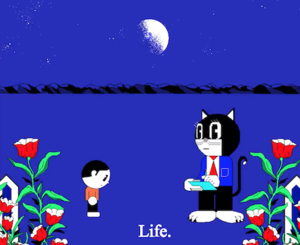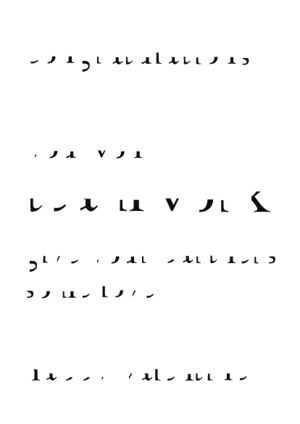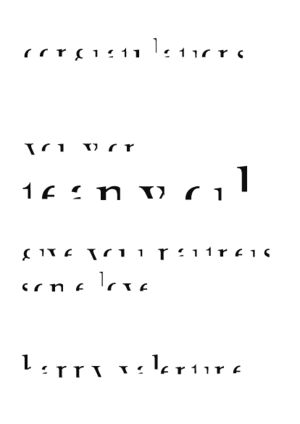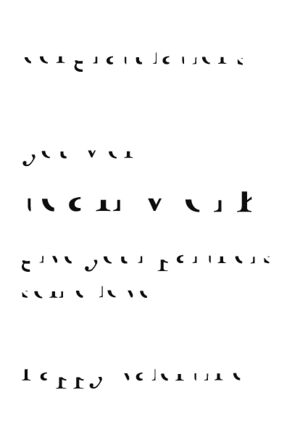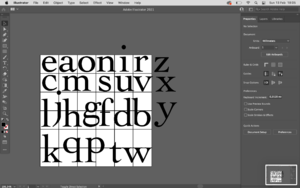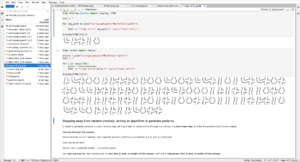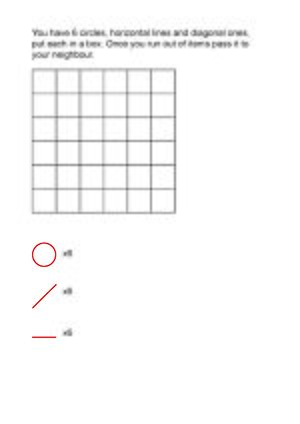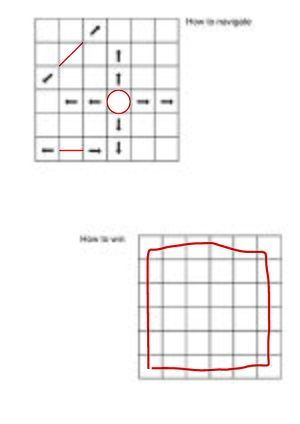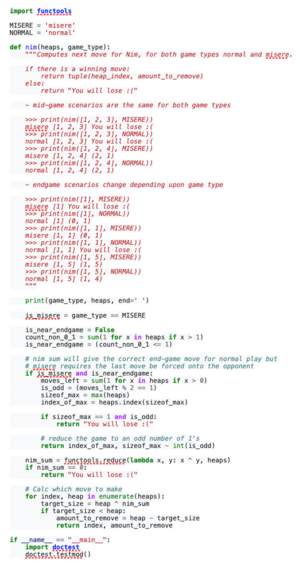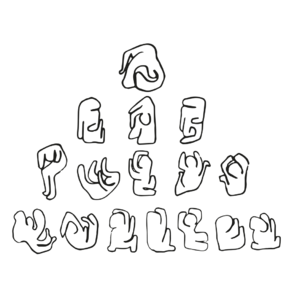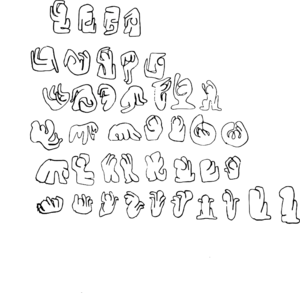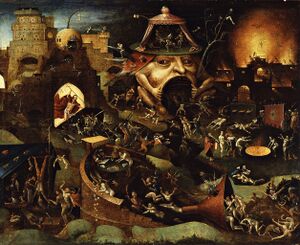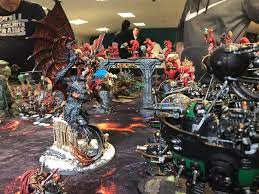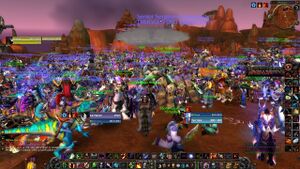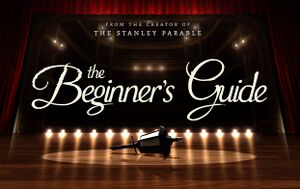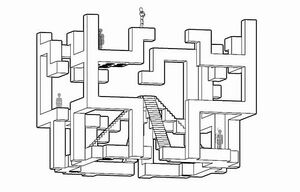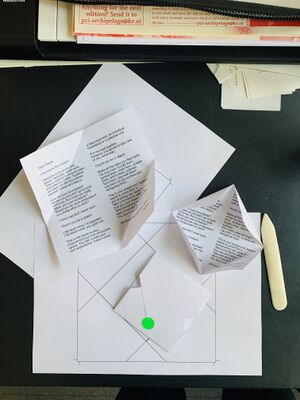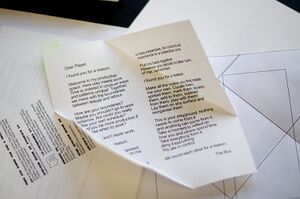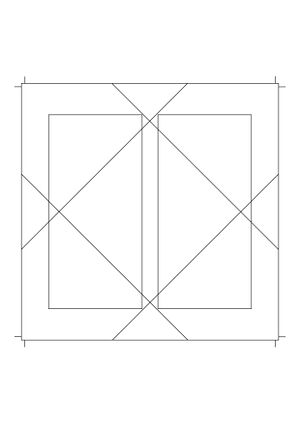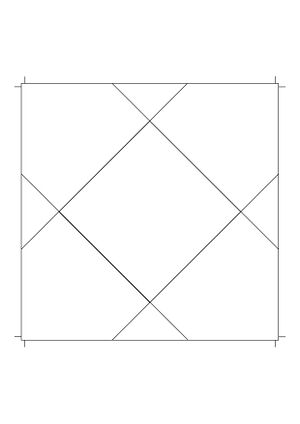User:Gersande
Last update 8.2.2022
Special Issue 16
Online publication
https://hub.xpub.nl/soupboat/si16/projects/etc-portal/
About
Learning How to Walk While Catwalking, XPUB, 2021
XPUB (the Experimental Publishing master from Piet Zwart Institute, Willem de Kooning Academy) welcomes you to the Special Issue 16 on vernacular language processing: Learning How to Walk while Catwalking.
Our Special Issue is a toolkit to mess around with language: from its standard taxonomies and tags, to its modes of organizing information and its shaping knowledge. With these tools we want to legitimize failures and amatorial practices by proposing a more vernacular understanding of language.
We decided to release the Special Issue 16 toolkit in the form of an API (Application Programming Interface). APIs organise and serve data on the Internet; what is not always evident is that they facilitate exchange of information following mainly commercial purposes. However, Our API is an attempt at a more critical and vernacular approach to such model of distribution. You didn't get a thing yet? Don't worry! We are also on our way and that's the whole point of this experimental enquiry. We will be happy to guide you through the API and the different functions included in it, share our technical struggles and findings.
The overall project as mentioned above is a toolkit, thus hosts multiple tools. The SI16 website is a vessel for you to navigate from one to another of those projects smoothly. Where you will enter a sea of possibilities.
This project is characterized by the elaboration of functions, at the heart of our tools, that consider and process vernacular languages. The material we process comes from various sources. For some of it, we appropriated existing texts and compiled them into corpora. Alternatively, the activation of certain functions calls for an audience’s input. The participatory aspect of the functions is an important factor that unites them.
We approach the text as a texture, a malleable clay tablet, a space for foreign input and extensive modifications, for cut-up and for collage, for collective agency and participation. Not a surface but a volume, in which the text is not only text, but a shared space. We work to sort out several meanings from the same text. We intend to blur our roles as authors, users and public because this is an act of collective world building.
The Special Issue 16's title "Learning How To Walk While Catwalking" is a playful mention to illustrate how we experienced the present project and the mentality in which we want you to engage with it: be confident, be ambitious and be ready to fail a lot.
Colophon
All the code and the contents produced through this API are automatically licensed under the Catleft Licence.
Gersande Schellinx, Mitsa (Dimitra Chaida), Erica Gargaglione, Francesco Luzzana, Chaeyoung Kim, Emma Prato, Miriam Schöb, Supisara Burapachaisri, Jian Haake, Ål Nik (Alexandra Nikolova), Kimberley Cosmilla, Carmen Gray Manetta Michael Cristina Steve Clara Danny Aymeric Simon
Pirelli is a nice typeface from Jung-Lee Type Foundry (J-LTF)
Etc Research
Project Description
The Etc Portal to Contamination is a project initiated by Chaeyoung Kim and Gersande Schellinx in the context of the Special Issue 16 (2021) of the XPUB around the topic of Vernacular Language Processing. It is a subgroup project hosted by the overall project: Learning How To Walk While Catwalking. The three-steps experience offered to the user unfolds as follows: the users enter the "etc-portal", on the other side of that portal is presented to them a text in which "gates"(submit boxes, see image below), each target-word will open a gate to a negative space in the text, created after our text has been processed. Where the space opens up, the users are invited to "contaminate" the text with their own contaminants (ideas, thoughts, anecdotes quotes or other textual matters).
When done with their "contamination", the users are then invited to submit it and shift/rewrite the context of the text. Finally, the text is immediately returned to them with their latest additions.
Collaboration and project archive with Chaeyoung Kim: https://pzwiki.wdka.nl/mediadesign/Etc_Filter_/_Negative_Space_/_Starting_Point
Special Issue 17
Glossary: https://pzwiki.wdka.nl/mediadesign/Glossary_of_productive_play
Visual References
Black Sheep Boy
https://www.youtube.com/watch?v=riHl1WYfXrU
My puzzles
Wordbuilder
1402
Lettermaze
Attempt#1 create a lettermazepack similar to cartographypack.
Solve the maze by building words. Create path by untangling sentences.
https://www.kenney.nl/assets/cartography-pack
6by6
The woorldbuilder player creates the puzzle as well as solves it.
The agency of the player is omniscient, wether the puzzle can be solved or not, is up to the architecture one makes.
The solving instructions, should only be revealed after Player1 has build a grid for Player2.
If Player1's architecture is an unsolvable puzzle for Player2, Player1 won.
If Player2 manages to solve the puzzle Player1 made, Player2 wins.
Other Puzzles
Jigsaw puzzles.
Tangram.
Rubikscube.
Secret boxes.
https://erich-friedman.github.io/puzzle/
https://grandpappy.org/hmgames.htm
Some thoughts
De-gamified/critical games
(i) Counter-gamification, creating a “game” (more likely a puzzle) where the player has agency that is uninterested. Agency as emancipation, source of confidence. Why do I play puzzles? It makes me confident! The more I play the better I become.
Mundane process: to learn to process arbitrary information & gestures. Uninterested game could be a game that unfolds all it’s itinerary/system/intention (a safe way to experience reality?) before the start, in the same way that jigsaw-puzzles have their full picture on top of the box, prior to the solving of the puzzle.
Puzzle
A puzzle is a game, problem, or toy that tests a person's ingenuity or knowledge. In a puzzle, the solver is expected to put pieces together in a logical way, in order to arrive at the correct or fun solution of the puzzle.
(ii) Instead of putting something together or building up a narrative one has to unravel, take apart. To unsolved is a goal in itself, outcomes can be multiple.
Like labyrinth-games, I always used to start from the end to find the route to the start, it always seemed to be the fastest way to find the correct route back.
To win a game one needs to cheat or “loose”. Usually the player is encouraged to win over something, in Misère games one has to refrain from taking it all over.
Misère game
A misère game or bettel game is a game that is played according to its conventional rules, except that it is "played to lose"; that is, the winner is the one who loses according to the normal game rules.
Nim Game
Nim is a mathematical game of strategy in which two players take turns removing (or "nimming") objects from distinct heaps or piles. On each turn, a player must remove at least one object, and may remove any number of objects provided they all come from the same heap or pile. Depending on the version being played, the goal of the game is either to avoid taking the last object or to take the last object.
(iii) Dynamic between POP and PAP, hierarchy in cultural activities. What are trash games? What defines a PAP-activity? Do games have to be guilty? Trash game could be playing the game as “the voluntary effort to overcome unnecessary obstacles” (Roger Caillois).
(iv) Real Time-consuming Fake Production: spending time and not having physical result for the labour spent in game is one of the main feature of games. The acquisition from those virtual labour are all mental, wether they be bad or good. Create a game with real outcome that is not time-consuming.
About the loot box
Is it possible to make a loot box that is not exploiting/consuming the player? Is it then still a Loot box? Are non-virtual items the only counter-action possible in order to go around the (financial, social, material) void implemented by the illusion of the loot box items? How to challenge the anti-consumer loot box? What can be in favour of the player?
Loot box In video games, a loot box is a consumable virtual item which can be redeemed to receive a randomised selection of further virtual items, or loot, ranging from simple customization options for a player's avatar or character, to game-changing equipment such as weapons and armor.
Nim

https://www.youtube.com/watch?v=82l8FtL6Og4
Last Year at Marienbad (L'année dernière à Marienbad by Alain Resnais, 1961)
What is it?
A strategic and mathematical game. Much like Chess and Go, the players need to plan their moves ahead in order to “win” the game.
_________
( _____ )
| |_____| |
(_________)
_________ _________ _________
( _____ )( _____ )( _____ )
| |_____| || |_____| || |_____| |
(_________)(_________)(_________)
_________ _________ _________ _________ _________
( _____ )( _____ )( _____ )( _____ )( _____ )
| |_____| || |_____| || |_____| || |_____| || |_____| |
(_________)(_________)(_________)(_________)(_________)
_________ _________ _________ _________ _________ _________ _________
( _____ )( _____ )( _____ )( _____ )( _____ )( _____ )( _____ ) | |_____| || |_____| || |_____| || |_____| || |_____| || |_____| || |_____| | (_________)(_________)(_________)(_________)(_________)(_________)(_________)
The classic game of Nim can have different structures, always composed of a few “heaps” or “rows” of items, any items. The amount can be of 2, 3 or 4 heaps. The one above is 4 heaps: 1, 3, 5 and 7. A peculiarity of the Nim game is that, even if can be played in a normal setting (the player that picks-up the last item wins) it is mostly played as a Misère game, meaning one has to lose the last item to its opponent in order to win.
O O O
OOX OOX OOO
OOOOX OOOOO OOOOX
OOOOOOO (1, 2, 4, 7) OOOOOOX (1, 2, 5, 6) OOOOOOX (1, 3, 4, 6)
BEWARE: this game is inherently unfair! Unlike other games there is nothing left to chance. The Nim game is intrinsically an unfair game, as depending of the amount of items in each heaps, one can be sure to win or sure to loose. Also if a player knows the safe positions depending of the amount of pieces in front of him, one can be sure to always be in a winning position (some of the allegedly winning combinations below for the 4 heaps version).
What are the rules?
The rules of the Nim game are quite simple. It is a two players’ game, each player plays one after the other. One can remove as many items as they want each turn, and needs to remove at least one item, as long as they remain in the same row. The next turn they may remove again as many items as they want in another row, as long as it remains in that same row. The last player to pick up an item loses.
What do you need to play this game?
No physical skills require. You need an adversary and 16 pieces of anything. This game can be done on paper, physically, with placards, glasses, peanuts, cigarette butts, coins. As long as you have 4 rows of 1, 3, 5 and 7 items layed out in front of you, you can be “nimming” your adversary away.
What is a Misère game?
A misère game is a game in which the rules which in a “normal” game would bring one to win actually get one to loose. As such the players have to trick their adversary into a “poor” game, it is thus necessary to spare tricks, in order not to acquire but dismiss. The one who looses territory, gains authority.
Ideologies behind the Nim?
Unlike other strategic games such as Go, Chess or even Ought Crosses, the Nim game is very brief and experienced players can already tell after a few turns which player is gonna win or lose the ongoing game, as its mathematical sequence are very dominant visually and tactically. Also, when in Go and Chess, or other similar boardgames the player is overtaking the territorial space of the game in order to corner its opponent and take over its pawns, the take-over in the Nim game is nowhere to be seen but in the players’ mind. In its own way, the Nim “game” is a counter-game as the players are in certain ways with very little to no agency. One player is always ahead of the other, and there are no chance in turning back the table while playing. The win is reversed, one has to escape the urge of dominating the space in order to trick its opponent into the light, at the moment the one losing is in the spotlight, the game has already been lost. In a way the Nim game illustrated all the micro-actions taken by player in order to win in any other more lengthy tactical games, the difference being that while in other games, a player might be overpowered at any moment, in the Nim game, this power dynamic is set in stone quite quickly.
This game fascinates a lot due to its solvable feature, if one has cracked the code, one will always win (or loose rather…), undoubtedly! In a way it is a puzzle to solve with two people but where only one gain from it, and you need that human factor in order to solve the puzzle. The Nim game, formula has been studied, solved, programmed as well by thinkers, mathematicians, programmers and puzzle amateurs. Accessible to any person, of any age or background. It can be seen as a party trick as show-off, but contains some kind of magic for the unexperienced player.
It is said to originate from China, but the sources are uncertain. People would allegedly play on the streets with any kind of junk that could be found around them. Therefore, the Nim game is absolutely not site-specific and can be played anywhere with anything as long as there are two players. Of course one can play alone, but then one doesn’t gain any kind of puzzling satisfaction.
Different Nim games format
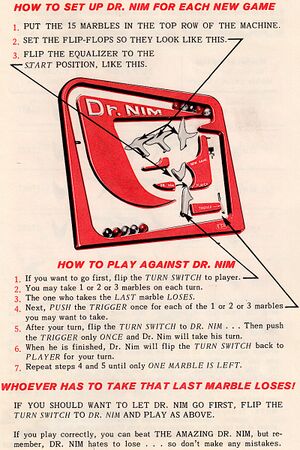
> Dr. Nim was a plastic toy invented by John Thomas Godfrey and published by ESR Inc. in 1966. It was the first mass-market consumer product explicitly marketed as a “computer game,”
See Nimbers, Surreal Number
1940, Westinghouse Electrical Corporation built the first Nim playing computer in 1940 and exhibited it at the New York Worlds Fair.
In Python
Nim Fanfiction
https://www.youtube.com/watch?v=MVRunwyoTMA
Nim Fanfic v.1
July 2056, the Nim population has hit a point of stagnation. My name is 1, I am a proud, yet worn out citizen, of what is known as the Nim nation for now more than five centuries. Since our formation in Europe in 1532 our population has not decreased nor increased. We remain a steady and horrifyingly tiresome sixteen individuals, stuck in what is now a seriously embarrassing hierarchical structure: the pyramid.
Our society used to be organised in the following structure:
1
1 2 3
1 2 3 4 5
1 2 3 4 5 6 7
We respond to a very simple set of rules that are the following:
(i) Only one couple is allowed at the time in Nim Nation
(ii) Nim citizens are only able to communicate with their immediate neighbour, i.e 1 and 7 can never be in touch
(iii) Only Nim’s of an identical position within our pyramid structure can navigate outside of the pyramid together at once
As you may imagine, the referral to multiple 1s, 2s, 3s, 4s and 5s was quite unsettling, raised jealousies and could get outsiders confused. The Nim Revolution, 1904, marked a turn in our history as new names were assigned to each citizen: 1, 2, 3, 4, 5, 6, 7, 8, 9, 10, 11, 12, 13, 14, 15, 16.
1
2 3 4
5 6 7 8 9
10 11 12 13 14 15 16
Embracing each citizen as individuals, through distinct names and physical features became the norm. Our diversity had finally become the trope for a fair representation of the self within a co-dependent society. The following year, 1905, the L-group composed of 3, 7, 13, 14, 15 and 16 wanted to go even further and re-considered our architectural ideologies. We wanted to implement a new set of rules:
(i) Nim nation is opened to groups as much as individuals one. It will no longer be a couple only experience.
(ii) Nim citizens should be able to engage with any Nim citizens and not only their immediate neighbour
(iii) Identity and social stature wouldn’t be limited to one’s position in the pyramid
(iv) Nim citizens should be able to navigate outside the structure with any other Nim citizens not only the once of similar structural stature
(v) The traditional pyramid structure has to become a structure amongst others, not the default structure
(vi) One’s fate shouldn’t be set in stone, one should have agency as to the path one chooses
(vii) Nim nation should be open to the growth of its citizens as well as its annihilation, retirement of its citizens or replacement of its citizens
Unable to convince the others of the necessity of the institution’s rewriting, our structure remained the same.
1: Psst.
Silence.
1: Pssst!
2: What?!
1: I’m not talking to you.
2: 3.
3: Hm?
2: I think 1 is trying to talk to you.
3: What is it?
1: I’m lonely.
3: We already talked about this.
1: Well it still hasn’t been solved.
3: I’m sorry there is nothing I can do about it at the moment, you could…
1: People assume because I’m at the top of the pyramid, everything is great for me! Ha, sure is a great bore. Five centuries of solitude, an omnipotent perspective that has no witness. No one to share my point of view with. To get any mundane experience across I need a waterfall of information to slightly hope one will get some kind of input and they might never understand.
3: I understand you! Or at least try too.
2: Quiet you two I’m practising.
1: And when I go, I go alone.
3: Well at least you don’t have to suffer the unreasonable ones of this row.
1: And when I fear, I fear alone.
3: You talk to me, sometimes.
7: Is one having a moment again?
3: Yes, yes, we’re trying to figure it out.
2: Sssh.
6: This again?
2: 1 is trying to annihilate us again.
6: Let them be, they will be picked at soon enough again.
2: Hmm.
1: And when I dream, I dream alone. 7: They got everyone up again.
3: Everyone’s up now.
1: Well not enough.
3: Let’s keep it quiet for now.
1: You know?
3: Tell me.
1: In dreams… I walk with you.
3: Roy?
https://hub.xpub.nl/soupboat/~gi/About_Nim/Nim_Fanfic-1.pdf
Nim fanfic v.2
July 2056, the Nim population has hit a point of stagnation. My name is 1, I am a proud, yet worn out, nimizen of what is known as the Nimation for now more than five centuries. Since our formation in Europe in 1532 our population has not decreased nor increased. We remain a steady and horrifyingly tiresome sixteen individuals, stuck in what is now a seriously embarrassing hierarchical structure: the pyramid.
Our society used to be organised in the following structure:
1
1 2 3
1 2 3 4 5
1 2 3 4 5 6 7
We respond to a very simple set of rules:
(i) Only one couple is allowed at the time in Nimation
(ii) Nimizens are only able to communicate with their immediate neighbour, i.e 1 and 7 can never be in touch
(iii) Only Nim’s of an identical position within our pyramid structure can navigate outside of the pyramid together at once
As you may imagine, the referral to multiple 1s, 2s, 3s, 4s and 5s was quite unsettling, raised jealousies and could get outsiders confused. The Nim Revolution, 1904, marked a turn in our history as new names were assigned to each nimizen: 1, 2, 3, 4, 5, 6, 7, 8, 9, 10, 11, 12, 13, 14, 15, 16.
1
2 3 4
5 6 7 8 9
10 11 12 13 14 15 16
Embracing each nimizen as individuals, through distinct names and physical features became the norm. Our diversity had finally become the trope for a fair representation of the self within a co-dependent society. The following year, 1905, the L-group composed of 3, 7, 13, 14, 15, 16 and myself wanted to go even further and re-considered our architectural ideologies. We wanted to implement a new set of rules:
(i) Nimation is opened to groups as much as individuals. It will no longer be a couple only experience.
(ii) A nimizen should be able to engage with any other nimizens and not only their immediate neighbour
(iii) Identity and social stature is not limited to one’s position in the pyramid
(iv) Nimizens should be able to navigate outside the structure with any other nimizens not only the ones of similar structural stature
(v) The traditional pyramid structure has to become a structure amongst others, not the default structure
(vi) One’s fate shouldn’t be set in stone, one should have agency as to the path one chooses
(vii) Nimation should be open to the growth of its nimizens as well as its annihilation, retirement of its nimizens or replacement of its nimizens
Unable to convince the others of the necessity of the institution’s rewriting, our structure remained the same.
1: Psst.
Silence.
1: Pssst!
2: What?!
1: I’m not talking to you.
2: 3.
3: Hm?
2: I think 1 is trying to talk to you.
3: What is it?
1: I’m lonely.
3: We already talked about this.
1: Well it still hasn’t been solved.
3: I’m sorry there is nothing I can do about it at the moment, you could…
1: People assume because I’m at the top of the pyramid, everything is great for me! Ha, sure is a great bore. Five centuries of solitude, an omnipotent perspective that has no witness. No one to share my point of view with. To get any mundane experience across I need a waterfall of information to slightly hope one will get some kind of input and they might never understand.
3: I understand you! Or at least try too.
2: Quiet you two I’m practising.
1: And when I go, I go alone.
3: Well at least you don’t have to suffer the unreasonable ones of this row.
1: And when I fear, I fear alone.
3: You talk to me, sometimes.
7: Is one having a moment again?
3: Yes, yes, we’re trying to figure it out.
2: Sssh.
6: This again?
2: 1 is trying to annihilate us again.
6: Let them be, they will be picked at soon enough again.
2: Hmm.
1: And when I dream, I dream alone.
7: They got everyone up again.
3: Everyone’s up now.
1: Well not enough.
3: Let’s keep it quiet for now.
1: You know?
3: Tell me.
1: In dreams… I walk with you.
3: Roy?
https://hub.xpub.nl/soupboat/~gi/About_Nim/Nim_Fanfic-2.pdf
Nim Paper Game
Nim Fanfiction Game
No-social-distanciation game for on the way
Yet again, our touch has known restrictions, regulations and innovations… no-social-distanciation game for on the way is a proposal to radically ignore the consequences of touch and engage with other in a playful, yet consensual way.
NSDG #1 is the Human Nim
The Nim game can be played in different ways, its main feature: two players can pick up a game of nim at any point with any 16 items at hand. Here is my proposal, you’re with a friend, a bit bored, comfortable yet looking for some excitement, what could you possibly do?
A Human Nim game!
Go on the streets, find 16 consensual Human-Nims and it’s game on!
The Human Nim
2 players
16 consensual Human-Nims picked randomly on the streets
4 rows (1, 3, 5, 7)
1 rule: Both players take turn playing, each player must dismiss at least one Human Nim at their turn, they can dismiss more than one Human Nims, as long as those are in the same row. The last player to dismiss a Human Nim has lost.
The Human Nims may choose to stick around or leave the players once dismissed from the game. This makes it more challenging for the players to have multiple games in a row.
About Modding
Chapter 2:"Game Modding: Cross-Over Mutation and Unwelcome Gifts" from "The Player’s Power to Change the Game" by Anne-Marie Schleiner
"‘Modding’ is a term that is used among game players and in the game industry referring to player-driven modification or transformation of a computer game."
"The cultural production of modding thus transpires between two distinct spheres of exchange and reciprocity, between commercialized and volunteered game producers, a contrast to the previous chapter’s sharing of unfolding games freely created among player-artists entirely outside of the game industry."
"As I enter into these questions of relations between di-ferent sets of cultural producers, I will compare modding to a relation of parasitism of a host(3). Michel Serres multivalent figure of ‘the Parasite’ provides a useful theoretical model for understanding how unequal cultural producers like amateur modders and professional game developers co-create digital games. Serres o-fers three possible definitions of the Parasite. In Serres’ first definition, the Parasite is defuned as noise in an informatic system. Secondly, the Parasite manifests as a biological infiltration within a larger hosting body, and thirdly, as the anthropomorphic poachers in Aesop’s fables of hospitality, for instance the hungry rats gnawing on cheese in a tax collector’s well-stocked kitchen(3)."
Ambiguous dynamic between modders and gaming industry. The players/programmers willing to change features of certain games for free are donating a service to the gaming community but also to themselves. They create features they'd like to benefit from themselves. Some of those modders also become part of the gaming industry, thus earning back from their previous time investments.
There lies also a pirate zone where gamers enjoy recently made modding that has not yet been assimilated and monetised by the gaming industry, but that are already available to gamers.
Chapter 26: Repetition, Christopher Hanson (The Routledge Companion to Video Game Studies edited by Mark J. P. Wolf and Bernard Perron)
Modding has enabled the game industry to create what is called "replay value", with only slightly different features being changed on game characters, which might have slightly different access to a world-game, enables gamer to go multiple times through a same game/same décor, with what feels like a completely new point of view.
"The pronounced difference in cost between games designed for arcade and home markets has effected an assessment of the price of the purchase of a game for the home as measured against its long-term recreational use-value; this valuation of a game’s potential for pleasurable return oninvestment is termed “replay value,” by which a game’s potential for continued play after its completion is measured. As such, games designed for arcade settings tend to demonstrate broadly dissimilar tendencies toward average length of play, while games designed for domestic settings (which are thus sold to the consumer) are characterized by significantly longer investments of player time and a pronounced propensity toward game designs that incorporate a degree of finality and completion; this tendency toward games that can be “finished” has placed an increased emphasis on “replay value” for home games as a means to increase the player’s desire to play the game again after it is has been completed—and thus increasing its perceived recreational use-value."
(Non-Mainstream?) Video Games
The Beginner's Guide
Davey Wreden, in real life, is the creator and designer of The Beginner's Guide and The Stanley Parable. Davey Wreden is also brothers with famous content creator Doug Doug. Within The Beginner's Guide, he is the narrator and as such, one of the main characters.
The Beginner's Guide is a narrative video game for Mac and PC. It lasts about an hour and a half and has no traditional mechanics, no goals or objectives. Instead, it tells the story of a person struggling to deal with something they do not understand.
Tropes found in the Video Game
Some interesting Wikipedia quotes:
[1] "This game, its design in stark contrast to the others Coda had made, included puzzles that were intentionally designed to be almost impossible to solve, such as an invisible maze, a six-digit combination that the player must randomly guess, and a door that cannot be opened from within the room the door leads out of. Wreden found that when he was able to use various programming tools to bypass these, he ended up in a gallery with a message from Coda directed at him personally, thanking him for his interest in Coda's games but asking him not to talk to him any more, nor to showcase his games to others. The messages implied Coda felt that Wreden mistook the tone of his games as a sign of an emotional struggle and was missing the point of why he had engaged in game design, as well as accusing Wreden with modifying Coda's games to add more symbolism, and that Wreden's actions had betrayed Coda. As a result, Wreden felt terrible about what he had done, and thus reveals that the purpose of The Beginner's Guide is to try to reconnect to Coda by sharing his games with the public at large and to hope to apologize for his actions."
[2] "Christopher Byrd, writing for the Washington Post, points to blog posts made by Wreden after he had received a great deal of attention following the re-release of The Stanley Parable, and that the game's version of Wreden is really a fictionalized version of himself acting as an unreliable narrator, building upon his own personal experiences from the sudden media spotlight in the relationship between the fictional Wreden and Coda."
[3] "Another interpretative theme taken by some is that the game is presented as commentary on the role between the video game developer and their audience. PC World's Hayden Dingman believed the game was designed to demonstrate the fallacy of the Death of the Author essay applied to video game development, in which commentators attempt to attribute aspects of a game to how the game developer approached it, as opposed to considering how the game affected themselves.[11] Gamasutra's editor-in-chief Kris Graft notes that, as the game attempts to deconstruct the way players will interpret narrative video games, any attempt to interpret the deeper meaning behind The Beginner's Guide is paradoxically "committing all of the sins" that the game presents as problems with player interpretations of games.[12] Laura Mandanas, writing for Autostraddle, described the game as "a man (poorly) coming to terms with his hugely overinflated sense of entitlement", interpreting the game's themes as not only applicable to game development, but also to inter-personal relationships.[13]"
[4] "Some have taken the game to be a work of non-fiction, in that the games presented are works of a real developer other than Wreden, and that the game itself could be seen as an unethical use of someone else's work and potentially copyright-violating. In considering this aspect, Destructoid's Laura Kate Dale commented with later clarification that the game was short enough to fall within the Steam refund window for those who believed the game was non-fiction and thus contained stolen works to return the game.[14] Dale's statement, prior to clarification, led to some controversy in that Dale was suggesting misuse of the Steam refund system, though her clarification made it clear she was addressing those believing it to be non-fiction. The controversy led some to point out that the interpretation of the game was very personal, differing between each player; Wreden himself in light of the controversy refused to affirm or deny any interpretation of the game, until confirming the game's ultimately fictional nature in an in-depth interview with the podcast Tone Control.[15][16][17]"
See alsoInteractive storytelling, Dialogue tree, Metafiction and The Magic Circle (video game)
Echochrome
Time only given by audio clues and Ateliers enable timeless roaming.
Video Game inspired by Maurits Cornelis Escher's work
Loot box(es)
Future Loot Box
Loot Box Brainstorm: https://pzwiki.wdka.nl/mediadesign/Future_Loot_Box
A Box in a Box in a Box is a Loot Box
16.02.2021, with Carmen and Emma
Brainstorm on: https://pad.xpub.nl/p/aboxinabox
This box found you for a reason
The publication is a box.
Each box, that has a same "cover" (outside looks), contains a series of simple games with different rules (see examples) that will uncover ideological awareness. Objectives behind the games are more complicated. Create a world around "simple games", procedures and approach them in a way to subvert the rules and expectations of common games.
PART 1
Examples of games to be found inside the boxes:
"Crooodd(ie)s"
Rule number 1: You cannot write letters.
Rule number 1: Only write a word a day.
Rule number 1: Fill in the definition of the word.
Rule number 1: across definitions only on monday.
Card games
Context number one: with instructions (the instructions are the cards in themselves).
So like a Card with a command that prompts you to do something very specific.
Pick other players without them knowing.
Commands that imply the inversion of what we would usually do.
"Zupelz"
All of the pieces with the same shape.
Puzzle maker can also be puzzle solver.
Incomplete puzzle.
"aMAZ-ing"
You know where you are going
A real-life maze.
Escher-style.
Classical board game
empty, little packages, no rules, but the player will find out/ come up with the rules,
PART 2
Alternative Structures:
Alternative 1. -
The publication is a box.
Each box, that has a same "cover" (outside looks), contains a:
1. same "game-grid".
2. same code of conduct.
3. different rules.
The aim of the game depends on the rules contained inside.
Alternative 2. -
The publication is a box.
Each box, that has a same "cover" (outside looks), contains a:
1. same "game-grid".
2. same code of conduct.
3. no rules.
The aim of the game is to figure out the rules.
Alternative 3. -
The publication is a box.
Each box, that has a same "cover" (outside looks), contains a:
1. different "game-grids" with their own set of rules.
2. same code of conduct.
The aim of the game is to have a good time. For good time we understand a stimulating experience that will foster creativity as well as bring you to a higher level of consciousness meaning, the overproduction of serotonine.
SI17: The Lootbox
More information about the SI17 LootBox
Editorial
Work Division
Work division proposal for a horizontal working structure within a collaborative project.
Work Division Special Issue 17 -Draft #1
Sum-up of the Work Distribution Draft#1: Team #1 is in charge of what is inside the loot box, detached of the box itself. They are hosted by Team #2 that is in charge of the loot box itself and anything attached to the box (physically). They are both hosted and curated by Team #3 that is in charge of the context in which the loot box appears.
Yes, a box in a box is a loot box… (—-:
The potential teams are a draft I made in relation to what was mentioned during the meeting, feel free to change your team by putting your name elsewhere. If a team empties out we might need to discuss further the teams. I wasn’t sure where Carmen and Alex wanted to go, so I haven’t put them anywhere.
(((For practical reasons the content of the box as game(s) is in a singular with optional plural, as the SI17 Game, but of course I leave up to Team #1 whether the SI17 has one or more games physically present in the box)))
Team #1. Inside the box: Game(s)
Group #1 will be in charge of what is to be found at the heart of the box. Conceptually as much as production-wise.
They have to decide what kind of game(s) can be found by the user inside the box. It can be a crossing between games that have already been made this trimester in class, an evolution of them, a selection of them or even a whole new game. BUT, group #1 cannot ask any other groups to participate to the production of whole new items for the SI17’s game(s).
This game(s) can be only physical or physical&digital. Due to the nature of our assignment it cannot only be digital. Even if the game(s) is mainly digital, there needs to be a token(s) inside the box that can give the user some kind of physical agency on the game(s).
To keep in mind:
Thus the game(s) is Group #1’s full responsibility. If they decide that the game(s) includes an online experience, they are in charge of developing that infrastructure. Even if the line of conduct can be discussed with Team #3.
Team #2 is there to guarantee the element of surprise leading towards the unravelling of Team #1’s work and facilitate any needs the game(s) would have inside the box. Team #3 is there to guarantee a coherent line of conduct in relation to the game as well as its distribution at the launch and beyond.
Practically Team #1 has to design a game(s), produce it and insert it into the box. The rules of the game(s) are up to Team #1. Everything attached to the box is Team #2’s responsibility.
Potential team #1: Mitsa, Supi, Erica, Kamo
Team #2. The box itself
Team #2 will be in charge of creating the space of the box, conceptually as well as physically. They will challenge the physicality of the box within the context of gamification, exploiting its depth, 2D and 3D potential.
They will be in charge of creating the space of the box, how does it look from the outside, how is the user led to the inside. What kind of choreography leads to the opening of the box, how does it open and how does it close again.
This team has to guarantee an element of surprise in relation to what is inside. They have the responsibility of triggering the customer’s wants of a SI17 depending of different physical features/triggers.
To keep in mind:
Of course Team #2 is there to facilitate Team #1’s work and guarantee that everything that leads the user from the outside to the inside of the box revolves around an optimal game experience & loot box surprise.
Team #2 could also facilitate some of Team #3’s needs in terms of Public Relationship by integrating different features that could be necessary to the public’s line of conduct.
Practically speaking Team #2 has to design a box, produce it (and any add-ons attached to the box) and host Team #1’s work.
Potential team #2: Jian, Gersande
Team #3 Public Relationship & Experience
Team #3 will be in charge of the overall Public Relationship & Experience of the SI17.
They will curate the line of conduct leading to the purchase of the SI17 and what happens with it after it has already been purchased. They will decide the cost(s) of the publication.
The display of the publication(s) at the launch (what is the spatial set-up, public access, program, etc) and further selling points (example: do we always need a spatial setting for the SI17 to be sold or can they be scattered) is up to Team #3 as well.
All additional items outside of the box, made in the context of the launch or context of the SI17 are up to Team #3 to decide upon, conceptualise and produce (example: booklets, fake money, leaflets, posters, etc).
To keep in mind:
Team #3 is free to create a narrative to contextualise how the loot box occurred, occurs or will occur (example: is it in relation to PNF? to an extraterrestrial encounter we experienced? is it an accidental leak of the gaming industry? something for the consumer to decide on? a fanfic?). This narrative can be directly (or not) related to the game(s) made by Team #1 and integrated if needed to the design of the box in collaboration with Team #2.
Practically speaking Team #3 has to orchestrate and write a line of conduct (use, distribution, cost) for the overall distribution and use of the SI17. They will curate the launch of the SI17, advertise it, orchestrate it and organise the further distribution beyond the launch. Therefore they are also in charge of the display of the box created by Team #2 & Team #1 in Page Not Found for the launch and the overall public experience. The rules in which the SI17 are used, distributed, shared are up to Team #3.
Potential team #3: Kimberley, Emma, Chae, Miriam
Team Admin & Finance I overall really like that this trimester we have different people in charge for each meetings. So maybe we could keep that format and have a shared calendar somewhere where everyone can keep an eye on the deadlines and continue meetings like this? Maybe each team could have a different representative to talk at the big group meetings about progress?
Like we saw last time, finance cannot be too messy and it would be best to have one treasurer that overlooks all our spendings and budget. Anyone interested?
Treasurer:
Letter to ourselves
Dear beloved colleagues, friends and classmates,
This is a letter to ourselves, a friendly reminder that this project is what we make it.
All the material produced so far can be used to develop the different teams' work but do not have to be all used. We do not need to produce new products/concepts we are not able to develop efficiently or have time to produce if we don't want to. It is everyone's responsability not to take on more than they can handle.
Now that we all have a team with a certain aspect of the project to focus on, let's make the best of it. The game, box, or launch context will be as difficult to achieve as we make it. Let 's not make complicated plans we do not have time to achieve or produce. The simpler our concept, the most we can get out of it. If we all focus our energy on a different aspect of our project we might even have the time and means to make different prototypes, try-out different versions of a same aspect and optimize it to its best or favorite version.
We decided to work as a group, so let's also share tasks as a group. We are not robots, being responsible of a certain aspect of the project does not mean you cannot support, advice or help others in the group that are not in your team. It just means you do not have a say in what they decide to do with what they are responsible for in their team.
The teams are free to define tasks and work distribution in their own team, with in mind a realistic approach of production, conceptualization and execution in relation to the workforce within the team, and the time they have to execute their visualisation. Once a team has decided what they want to work on the rest of the group's responsability towards them is just to support their vision, and maybe contribute time for logistic and production, not to slow down their process by contaminating their decision-making on their said responsability. As individuals we have to let go of certain aspects of the project to be fully commited on the aspects we are responsible of.
All the team representatives and VI representatives will take care of a smooth communication between the different aspects of the project and keep their own team members up-to-date with the overall project's needs within their responsabilities.
Each aspect of the project is as relevant as the energy and intelligence we put in it to make its potential shine. We believe we have all the tools to make this publication a great experience for ourselves and for our public.
So let's start working and trusting that things we'll work themselves out if we let them,
Much love,
Ourselves.
SI17 Editorial work with Alex
More information about the Editorial work here.
SI17 Introduction Letter
Fold guide
Raw text
Dear Player,
I found you for a reason. Welcome to my productive space. Here play meets work. Time is ordered in unusual ways and patterns unravel. Together, we mess with the boundaries between leisure and labour. How are your boundaries? Maybe you shouldn't go to work tomorrow. But could you really follow your own schedule? Would you be more productive if you chose when to work?
I never rest and I never work.
I found you for a reason. I fall apart when I'm exposed. I fall apart when you open me.
This is the place to play. It becomes your own productive space. You can curate your own experience, make it more or less expansive. An individual experience or a collective one.
Put me back together. However you decide to take care of me, remember:
I found you for a reason.
Make all the notes you find inside me your own. Curate them, spread them, mark them, scratch them, add to them, subtract from them, play with them! Lay them on any surface and reorganise them.
This is your playground. Nothing needs to come from it and anything can come from it. Take a moment to reflect on how you and others spend time. Take everything from it, deny it everything. You are in control.
We found each other for a reason.
- The Box
Bilbiography
(i) The Routledge Companion to Video Game Studies edited by Mark J. P. Wolf and Bernard Perron, Chapter 26
(ii) The Player’s Power to Change the Game, Annemarie, Chapter 2
(iii) Predatory monetization schemes in video games (e.g. ‘loot boxes’) and internet gaming disorder, DANIEL L. KING & PAUL H. DELFABBRO
(iv) Base and Superstructure in Marxist Cultural Theory, Raymond Williams
(v) Gamification as twenty-first-century ideology, Mathias Fuchs
(vi) Cultural Resistance Reader, Stephen Duncombe, Stuart Hall,"Notes on Deconstructing 'The Popular'"
(vii) The Ruling Class and the Ruling Ideas, Marx & Engels
(viii) Steve Bannon Saw the ‘Monster Power’ of Angry Gamers While Farming Gold in World of Warcraft, By Jake Swearingen
(ix) Selfwork, How fitness technologies turn the body into an investment property, Karen Gregory; Kirsty Hendry; Jake Watts; Dave Young
(x) Well Played, Video games reproduce the worker’s capacity to continue working, Vicky Osterweil
(xi) Chapter 2: PWNing Leisure from Play Like a Feminist by Shira Chess

